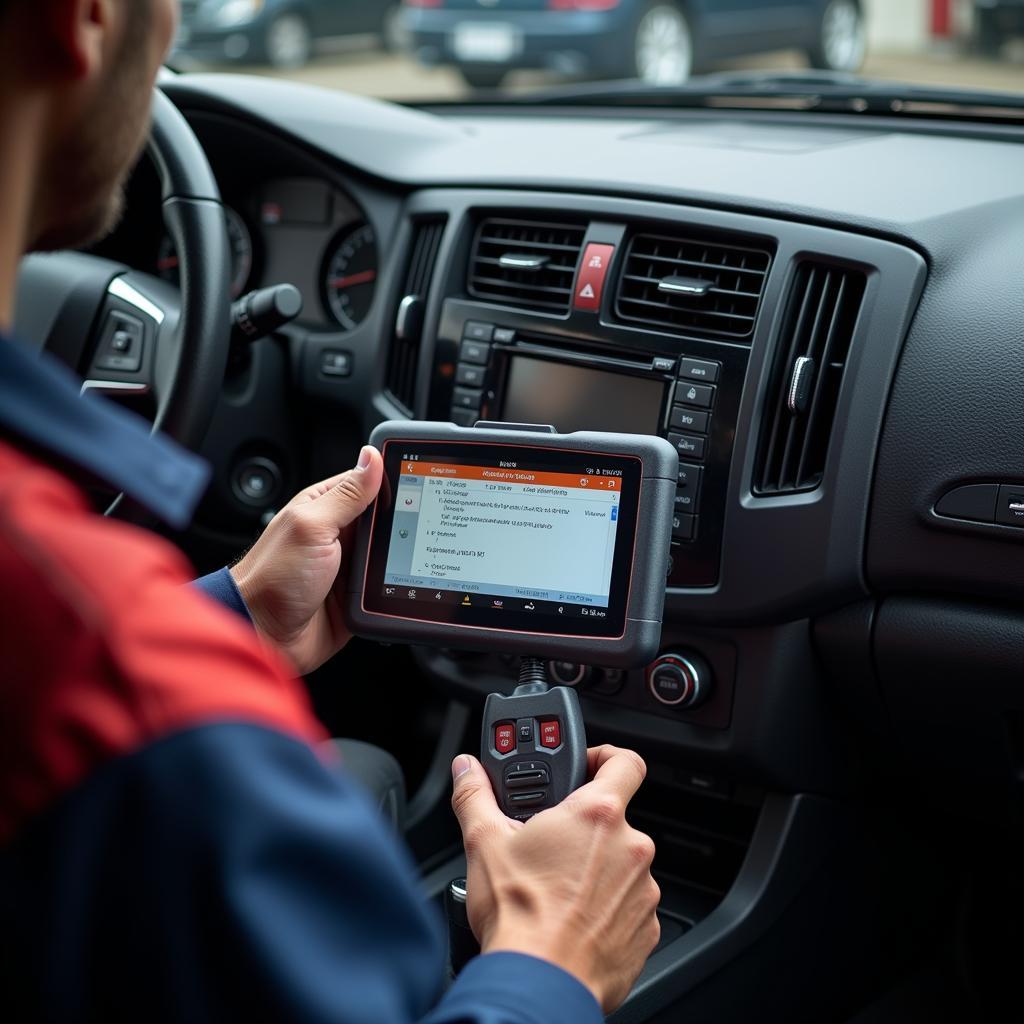Modern vehicles are technological marvels, relying heavily on complex computer systems for optimal performance. At the heart of these systems lies the car computer, often referred to as the Engine Control Unit (ECU) or Powertrain Control Module (PCM). This intricate system acts as the brain of your car, constantly monitoring and controlling various aspects of its operation. A car computer diagnostic is an essential process that delves into this electronic brain, identifying and interpreting issues that could be impacting your vehicle’s performance, fuel efficiency, or emissions.
What is Car Computer Diagnostic and Why Is It Important?
Car computer diagnostics involve using specialized equipment to connect to your vehicle’s OBD-II port, typically located under the dashboard. This connection allows a mechanic or technician to access the wealth of data stored within your car’s computer, including:
- Error Codes: These codes act as flags, indicating specific areas where the system has detected an anomaly.
- Sensor Readings: Data from various sensors throughout your vehicle, such as oxygen sensors, mass airflow sensors, and throttle position sensors, providing insights into real-time engine performance.
- Performance Data: Information on fuel economy, ignition timing, and other performance indicators that help pinpoint potential issues.
Regular car computer diagnostics are crucial for several reasons:
- Early Problem Detection: Identifying issues early can prevent costly repairs down the line.
- Improved Performance: Addressing issues revealed through diagnostics can optimize your engine’s performance, leading to smoother running, better fuel economy, and reduced emissions.
- Safety Assurance: Certain computer-controlled systems are vital for safe driving; diagnostics ensure they are functioning correctly.
Common Issues Revealed Through Car Computer Diagnostic
A car computer diagnostic can unveil a wide array of issues, from minor sensor malfunctions to more serious engine or transmission problems. Some of the most common issues include:
- Oxygen Sensor Problems: A malfunctioning oxygen sensor can disrupt the air-fuel mixture, leading to decreased fuel efficiency and increased emissions.
- Catalytic Converter Issues: Problems with the catalytic converter, responsible for reducing harmful emissions, can trigger warning lights and affect engine performance.
- Mass Airflow Sensor Malfunctions: An inaccurate reading from the mass airflow sensor can confuse the engine control unit, resulting in poor acceleration, rough idling, or stalling.
- Spark Plug or Ignition Coil Problems: Issues with these components can cause misfires, reducing engine power and fuel economy.
What to Expect During a Car Computer Diagnostic
- Connection and Scan: The technician will connect the diagnostic tool to your vehicle’s OBD-II port and initiate a scan.
- Error Code Retrieval: The tool retrieves any stored error codes, which are then interpreted to understand the nature of the issue.
- Data Analysis: The technician analyzes live data streams from various sensors to evaluate real-time performance and identify any anomalies.
- Further Investigation: If necessary, the mechanic may conduct further tests or inspections based on the diagnostic findings.
- Repair Recommendations: After pinpointing the problem, the technician provides repair recommendations and a cost estimate.
DIY vs. Professional Car Computer Diagnostic
While affordable OBD-II scanners are available for DIY enthusiasts, it’s crucial to remember that a car computer diagnostic is more than just reading error codes. It requires a deep understanding of automotive systems and the ability to interpret data accurately. For comprehensive diagnostics and reliable repair recommendations, seeking a qualified mechanic or technician is always recommended.


